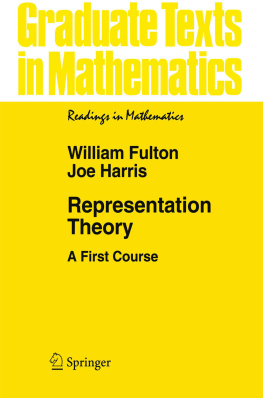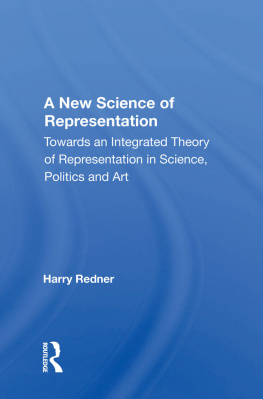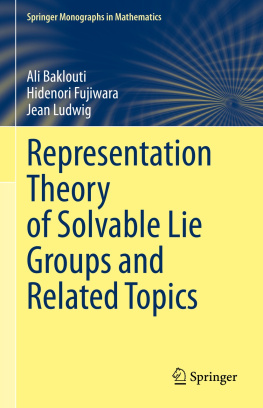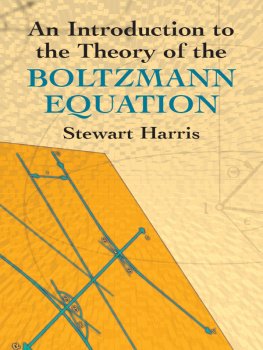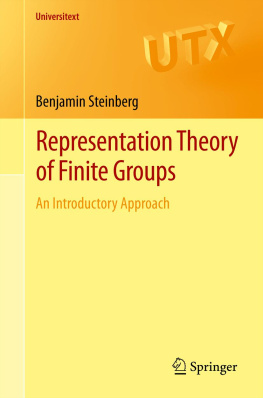Joe Harris - Representation Theory
Here you can read online Joe Harris - Representation Theory full text of the book (entire story) in english for free. Download pdf and epub, get meaning, cover and reviews about this ebook. year: 2014, publisher: Springer-Verlag Wien 2012, genre: Children. Description of the work, (preface) as well as reviews are available. Best literature library LitArk.com created for fans of good reading and offers a wide selection of genres:
Romance novel
Science fiction
Adventure
Detective
Science
History
Home and family
Prose
Art
Politics
Computer
Non-fiction
Religion
Business
Children
Humor
Choose a favorite category and find really read worthwhile books. Enjoy immersion in the world of imagination, feel the emotions of the characters or learn something new for yourself, make an fascinating discovery.
- Book:Representation Theory
- Author:
- Publisher:Springer-Verlag Wien 2012
- Genre:
- Year:2014
- Rating:3 / 5
- Favourites:Add to favourites
- Your mark:
- 60
- 1
- 2
- 3
- 4
- 5
Representation Theory: summary, description and annotation
We offer to read an annotation, description, summary or preface (depends on what the author of the book "Representation Theory" wrote himself). If you haven't found the necessary information about the book — write in the comments, we will try to find it.
Representation Theory — read online for free the complete book (whole text) full work
Below is the text of the book, divided by pages. System saving the place of the last page read, allows you to conveniently read the book "Representation Theory" online for free, without having to search again every time where you left off. Put a bookmark, and you can go to the page where you finished reading at any time.
Font size:
Interval:
Bookmark:
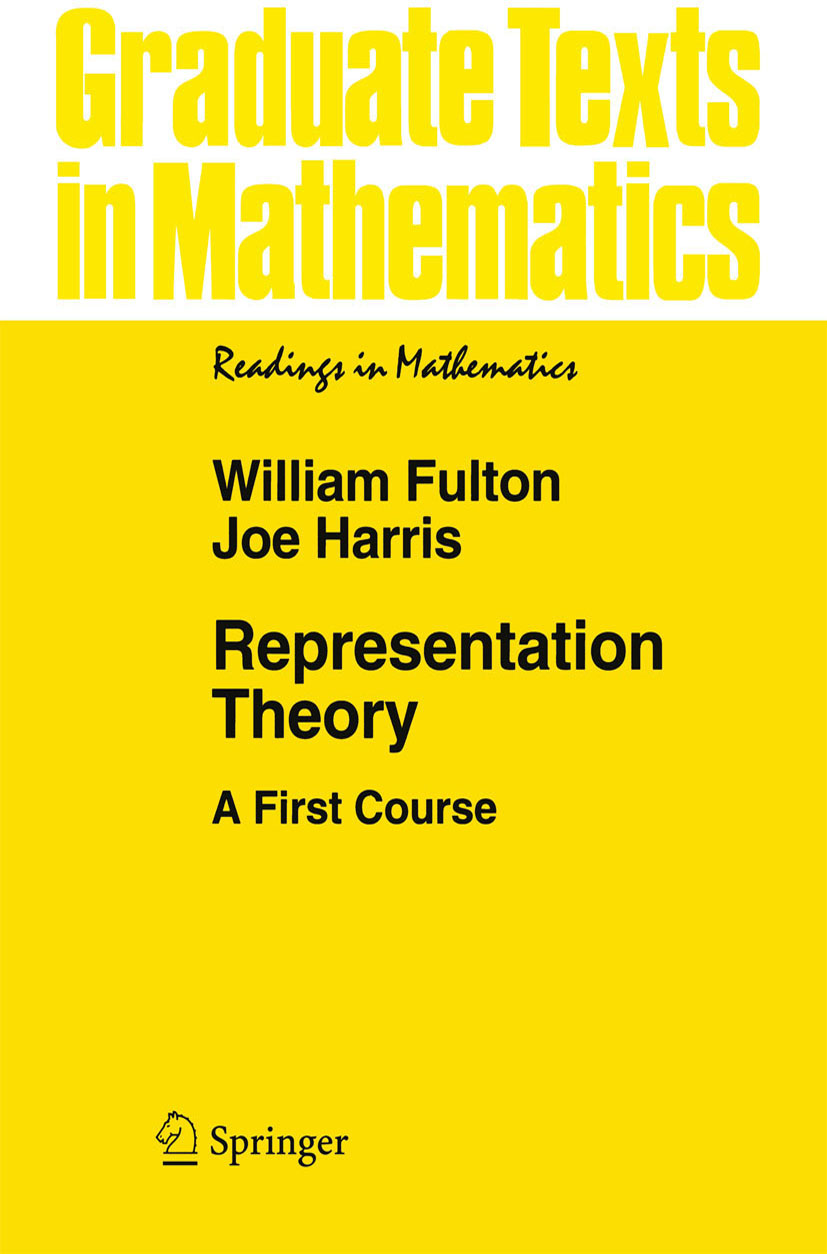
 or the general linear group over a finite field
or the general linear group over a finite field  , an infinite discrete group like SL n (), a Lie group like SL n , or possibly a Lie group over a local field? Needless to say, each of these settings requires a substantially different approach to its representation theory. Likewise, what sort of vector space is G acting on: is it over , , , or possibly a field of positive characteristic? Is it finite dimensional or infinite dimensional, and if the latter, what additional structure (such as norm, or inner product) does it carry? Various combinations of answers to these questions lead to areas of intense research activity in representation theory, and it is natural for a text intended to prepare students for a career in the subject to lead up to one or more of these areas. As a corollary, such a book tends to get through the elementary material as quickly as possible: if one has a semester to get up to and through Harish-Chandra modules, there is little time to dawdle over the representations of
, an infinite discrete group like SL n (), a Lie group like SL n , or possibly a Lie group over a local field? Needless to say, each of these settings requires a substantially different approach to its representation theory. Likewise, what sort of vector space is G acting on: is it over , , , or possibly a field of positive characteristic? Is it finite dimensional or infinite dimensional, and if the latter, what additional structure (such as norm, or inner product) does it carry? Various combinations of answers to these questions lead to areas of intense research activity in representation theory, and it is natural for a text intended to prepare students for a career in the subject to lead up to one or more of these areas. As a corollary, such a book tends to get through the elementary material as quickly as possible: if one has a semester to get up to and through Harish-Chandra modules, there is little time to dawdle over the representations of  and SL3.
and SL3.Font size:
Interval:
Bookmark:
Similar books «Representation Theory»
Look at similar books to Representation Theory. We have selected literature similar in name and meaning in the hope of providing readers with more options to find new, interesting, not yet read works.
Discussion, reviews of the book Representation Theory and just readers' own opinions. Leave your comments, write what you think about the work, its meaning or the main characters. Specify what exactly you liked and what you didn't like, and why you think so.

